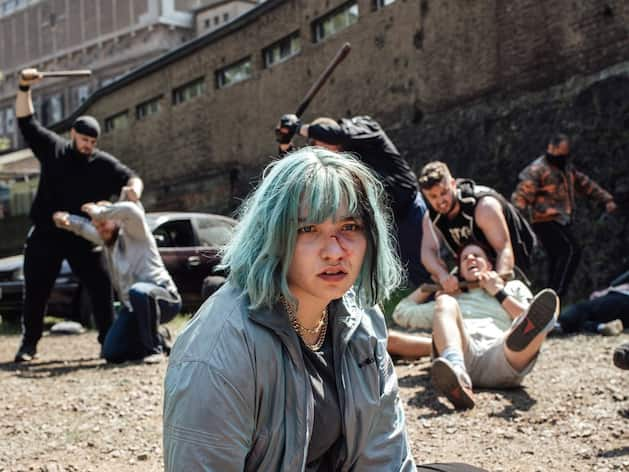Director Kerstin Polte (48, “Who actually invented love?”) describes the new Saarland crime thriller “Tatort: The Cold of the Earth” (January 29, the first) as an “industrial western”. And it came about like this: “After reading Melanie Waelde’s wonderful screenplay, it quickly became clear to me that I would like to go in a Western style stylistically, without horses and deserts of course, but instead in the midst of the old, grown and disused industrial landscapes of the Saarland, which bring a fascinating history and atmosphere,” explains Polte to the broadcaster SR.
The set designers and their choice of locations are always responsible for the atmosphere and look of a film. In this case, Winnie Christiansen and Anne Storandt went looking for the best locations – even though they had never been to Saarland before. In the run-up to filming, they dealt with questions like these: Where will the body be found? Is the mood rather gloomy? How does the perpetrator live?
What does a film location have to bring with it so that it becomes a suitable “crime scene” film location? “In the best case, a certain size for practical reasons, even if it is later told that it is smaller,” Christiansen and Storandt name as a first criterion.
There are also aesthetic decisions: “Together with the camera and direction, we often make sure that the motif has a certain depth and many beautiful perspectives. But that is an aesthetic decision that not every film team is subject to, and not a general requirement.”
Otherwise, the choice of locations “depends on the script, the concept of the staging and the atmosphere” that is to be told. “We’re often looking for the extraordinary, or places that already have a story to tell, or that characterize the region in a special way,” the production designers add.
In “Crime Scene: The Cold of the Earth”, chief inspectors Leo Holz (Vladimir Burlakov, 35), Adam Schürk (Daniel Sträßer, 35) and their team are investigating in Saarland for the fourth time. What role did the previous thrillers play in the choice of location?
“Since the ‘crime scene’ is a series, there are already some motifs, for example the presidium or the Schürk family home. We definitely take these motifs into account in the overall aesthetics,” explain Christiansen and Storandt. In other locations, they then look for “either unifying or very contrasting elements in order to create a coherent overall picture of the film architecture”.
In order to find suitable locations, the set designers, who were not from the area in this case, worked “with a location scout who is very familiar – in this case in Saarland – and was able to show us the smallest and narrowest corners of the city and the surrounding area”.
In addition, the two “rummaged through real estate portals in advance to get to know the architecture of a city a little”.
As another possibility to find what you are looking for, they mention the knowledge of the locals. In the case of this Saarland thriller, they were actually lucky and got to know locals who “could give an even deeper insight into the area” and had ideas for film locations “that would otherwise never have come across”.
“A little joy of discovery and the urge to explore are part of a good motif search,” summarize Christiansen and Storandt. “And if time permits, we also like to travel around the country by car or bike on our own to find potential film locations.”
This article was written by (ili/spot)
The original of this post “”Tatort: The cold of the earth”: How does the atmosphere of the crime thriller come about?” comes from spot on news.
